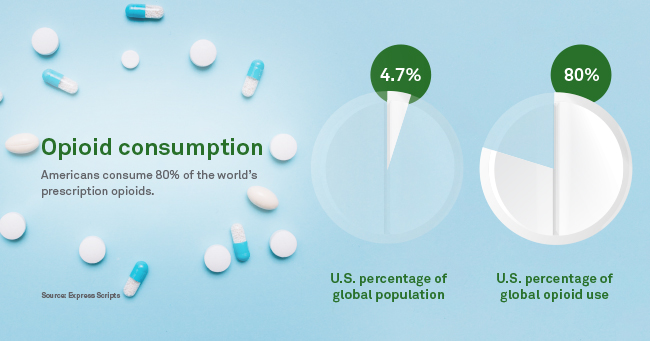 August 31st marks the six-year anniversary of the International Overdose Awareness Day. This initiative helps to raise awareness and to provide a platform for people to share their stories. Educating the public continues to be critical as the opioid crisis devastates our country. Dubbed the “worst drug overdose epidemic in U.S. history” by the Centers for Disease Control and Prevention, American opioid use compared to the broader global landscape may hold a clue as to why the epidemic is not slowing down.
August 31st marks the six-year anniversary of the International Overdose Awareness Day. This initiative helps to raise awareness and to provide a platform for people to share their stories. Educating the public continues to be critical as the opioid crisis devastates our country. Dubbed the “worst drug overdose epidemic in U.S. history” by the Centers for Disease Control and Prevention, American opioid use compared to the broader global landscape may hold a clue as to why the epidemic is not slowing down.
Comfortably numb
While the United States population makes up less than 5% of the total global population, it consumes nearly 80% of the world’s opioid supply, according to Express Scripts. Last year alone, drug overdoses were responsible for the death of approximately 72,000 Americans. Although this statistic includes illicit drugs, legally prescribed substances are an important part of the problem. Historically, the U.S. has approached pain management with the narrative that being pain free is crucial to enjoying a healthy, happy life. However, this attitude is starting to shift because addiction has deteriorated many people’s quality of life and fatal overdoses continue to rise.
International pain management
Other countries have a very different interaction with prescription drugs. Take this statistic from Quartz as an example: In the U.S., one dose of opioids is prescribed each day for every 20 people. In stark contrast, Japan reports one dose prescribed for every 800 people.
In low income, 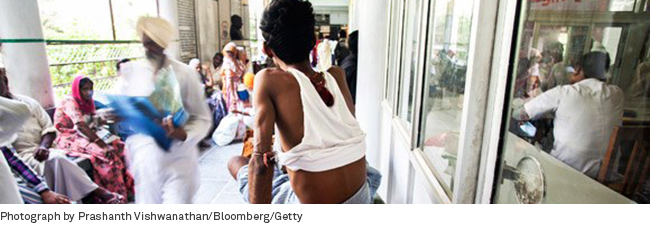 densely populated countries such as India, prescription rates are staggeringly low with opioid use per capita estimated at 2,000 times less than the United States. In India, opioid usage carries a stigma and strict regulations are in place to prevent opioid use, even for cancer patients. In fact, less than 20% of Indian medical schools educate their students about pain relief for patients with life-limiting illnesses, or palliative care, according to The New Yorker.
densely populated countries such as India, prescription rates are staggeringly low with opioid use per capita estimated at 2,000 times less than the United States. In India, opioid usage carries a stigma and strict regulations are in place to prevent opioid use, even for cancer patients. In fact, less than 20% of Indian medical schools educate their students about pain relief for patients with life-limiting illnesses, or palliative care, according to The New Yorker.
Funding the solution
Opioids have the power to drastically improve health as well as destroy lives. The Trump administration is working to fight the epidemic with a $1 billion grant program. The grant will focus on research, improved access to treatment, greater availability of overdose-reversing drugs, access to alternative pain management, and public awareness campaigns. Congress believes that the opioid crisis has a greater chance of diminishing if it’s tackled at both the national and local levels.
On this day, we remember the potential for opioid misuse and that an overdose can impact all areas of life, including the workplace. Drug testing for opioids is one way an employee can get much-needed treatment to live a better life while being a healthier, higher functioning employee.
To learn more about drug testing, visit our website.
 Your Privacy Choices
|
Privacy Notices
|
Terms
|
Language Assistance / Non-Discrimination Notice | Asistencia de Idiomas / Aviso de no Discriminación | 語言協助 / 不䈚視通知
Your Privacy Choices
|
Privacy Notices
|
Terms
|
Language Assistance / Non-Discrimination Notice | Asistencia de Idiomas / Aviso de no Discriminación | 語言協助 / 不䈚視通知

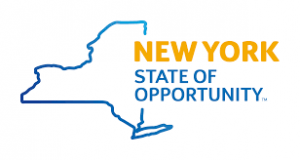


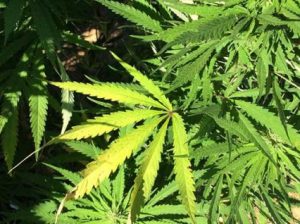

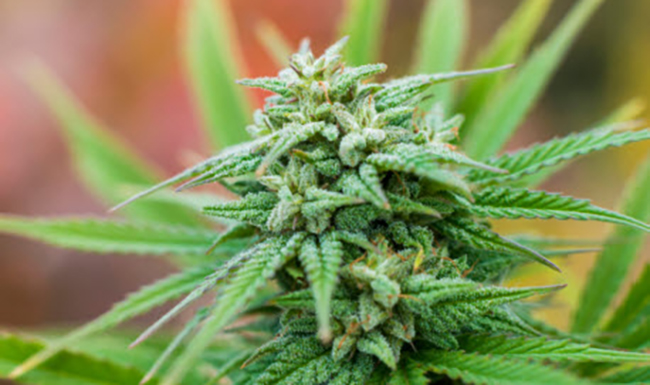

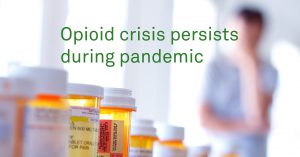




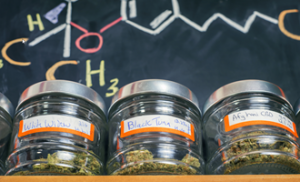




Comfortably numb
While the United States population makes up less than 5% of the total global population, it consumes nearly 80% of the world’s opioid supply, according to Express Scripts. Last year alone, drug overdoses were responsible for the death of approximately 72,000 Americans. Although this statistic includes illicit drugs, legally prescribed substances are an important part of the problem. Historically, the U.S. has approached pain management with the narrative that being pain free is crucial to enjoying a healthy, happy life. However, this attitude is starting to shift because addiction has deteriorated many people’s quality of life and fatal overdoses continue to rise.
International pain management
Other countries have a very different interaction with prescription drugs. Take this statistic from Quartz as an example: In the U.S., one dose of opioids is prescribed each day for every 20 people. In stark contrast, Japan reports one dose prescribed for every 800 people.
In low income, densely populated countries such as India, prescription rates are staggeringly low with opioid use per capita estimated at 2,000 times less than the United States. In India, opioid usage carries a stigma and strict regulations are in place to prevent opioid use, even for cancer patients. In fact, less than 20% of Indian medical schools educate their students about pain relief for patients with life-limiting illnesses, or palliative care, according to The New Yorker.
densely populated countries such as India, prescription rates are staggeringly low with opioid use per capita estimated at 2,000 times less than the United States. In India, opioid usage carries a stigma and strict regulations are in place to prevent opioid use, even for cancer patients. In fact, less than 20% of Indian medical schools educate their students about pain relief for patients with life-limiting illnesses, or palliative care, according to The New Yorker.
Funding the solution
Opioids have the power to drastically improve health as well as destroy lives. The Trump administration is working to fight the epidemic with a $1 billion grant program. The grant will focus on research, improved access to treatment, greater availability of overdose-reversing drugs, access to alternative pain management, and public awareness campaigns. Congress believes that the opioid crisis has a greater chance of diminishing if it’s tackled at both the national and local levels.
On this day, we remember the potential for opioid misuse and that an overdose can impact all areas of life, including the workplace. Drug testing for opioids is one way an employee can get much-needed treatment to live a better life while being a healthier, higher functioning employee.
To learn more about drug testing, visit our website.